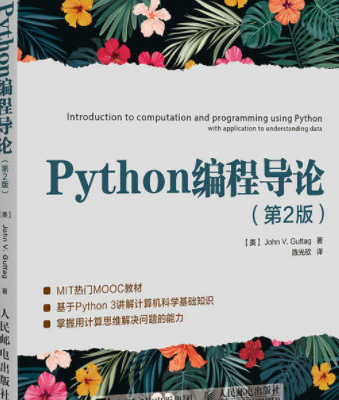Python编程导论(第2版)中文pdf完整版下载
本文源码基于版本1.0,交互界面基于0.4.1
import torch
按照指定轴上的坐标进行过滤
index_select()
沿着某tensor的一个轴dim筛选若干个坐标
>>> x = torch.randn(3, 4) # 目标矩阵
>>> x
tensor([[ 0.1427, 0.0231, -0.5414, -1.0009],
[-0.4664, 0.2647, -0.1228, -1.1068],
[-1.1734, -0.6571, 0.7230, -0.6004]])
>>> indices = torch.tensor([0, 2]) # 在轴上筛选坐标
>>> torch.index_select(x, dim=0, indices) # 指定筛选对象、轴、筛选坐标
tensor([[ 0.1427, 0.0231, -0.5414, -1.0009],
[-1.1734, -0.6571, 0.7230, -0.6004]])
>>> torch.index_select(x, dim=1, indices)
tensor([[ 0.1427, -0.5414],
[-0.4664, -0.1228],
[-1.1734, 0.7230]])
where()
用于将两个broadcastable的tensor组合成新的tensor,类似于c++中的三元操作符“?:”
>>> x = torch.randn(3, 2)
>>> y = torch.ones(3, 2)
>>> torch.where(x > 0, x, y)
tensor([[1.4013, 1.0000],
[1.0000, 0.9267],
[1.0000, 0.4302]])
>>> x
tensor([[ 1.4013, -0.9960],
[-0.3715, 0.9267],
[-0.7163, 0.4302]])
指定条件返回01-tensor
>>> x = torch.arange(5) >>> x tensor([0, 1, 2, 3, 4]) >>> torch.gt(x,1) # 大于 tensor([0, 0, 1, 1, 1], dtype=torch.uint8) >>> x>1 # 大于 tensor([0, 0, 1, 1, 1], dtype=torch.uint8) >>> torch.ne(x,1) # 不等于 tensor([1, 0, 1, 1, 1], dtype=torch.uint8) >>> x!=1 # 不等于 tensor([1, 0, 1, 1, 1], dtype=torch.uint8) >>> torch.lt(x,3) # 小于 tensor([1, 1, 1, 0, 0], dtype=torch.uint8) >>> x<3 # 小于 tensor([1, 1, 1, 0, 0], dtype=torch.uint8) >>> torch.eq(x,3) # 等于 tensor([0, 0, 0, 1, 0], dtype=torch.uint8) >>> x==3 # 等于 tensor([0, 0, 0, 1, 0], dtype=torch.uint8)
返回索引
>>> x = torch.arange(5)
>>> x # 1维
tensor([0, 1, 2, 3, 4])
>>> torch.nonzero(x)
tensor([[1],
[2],
[3],
[4]])
>>> x = torch.Tensor([[0.6, 0.0, 0.0, 0.0],[0.0, 0.4, 0.0, 0.0],[0.0, 0.0, 1.2, 0.0],[0.0, 0.0, 0.0,-0.4]])
>>> x # 2维
tensor([[ 0.6000, 0.0000, 0.0000, 0.0000],
[ 0.0000, 0.4000, 0.0000, 0.0000],
[ 0.0000, 0.0000, 1.2000, 0.0000],
[ 0.0000, 0.0000, 0.0000, -0.4000]])
>>> torch.nonzero(x)
tensor([[0, 0],
[1, 1],
[2, 2],
[3, 3]])
借助nonzero()我们可以返回符合某一条件的index(https://stackoverflow.com/questions/47863001/how-pytorch-tensor-get-the-index-of-specific-value)
>>> x=torch.arange(12).view(3,4)
>>> x
tensor([[ 0, 1, 2, 3],
[ 4, 5, 6, 7],
[ 8, 9, 10, 11]])
>>> (x>4).nonzero()
tensor([[1, 1],
[1, 2],
[1, 3],
[2, 0],
[2, 1],
[2, 2],
[2, 3]])
以上这篇在PyTorch中Tensor的查找和筛选例子就是小编分享给大家的全部内容了,希望能给大家一个参考,也希望大家多多支持谷谷点程序。
转载请注明:谷谷点程序 » 在PyTorch中Tensor的查找和筛选例子
